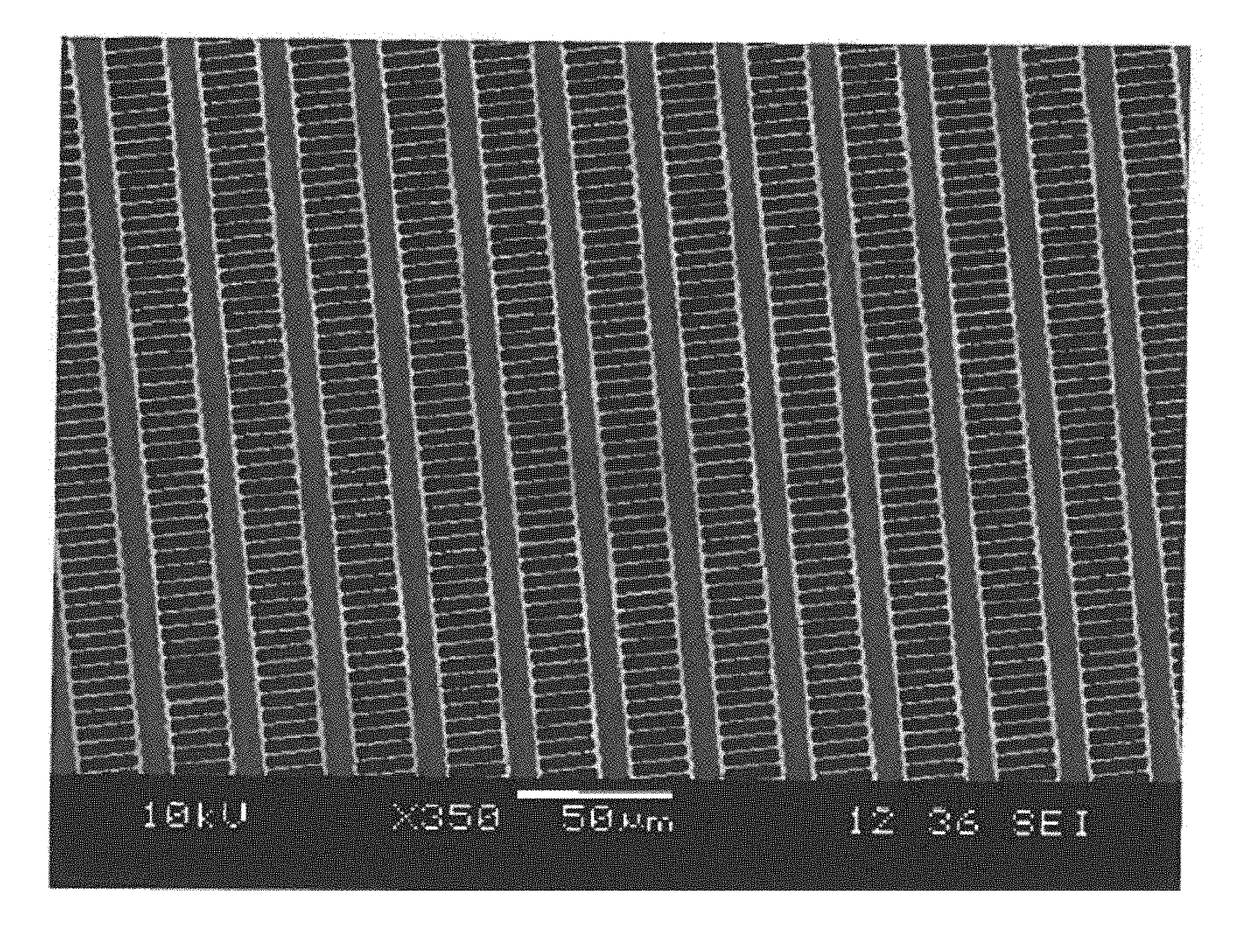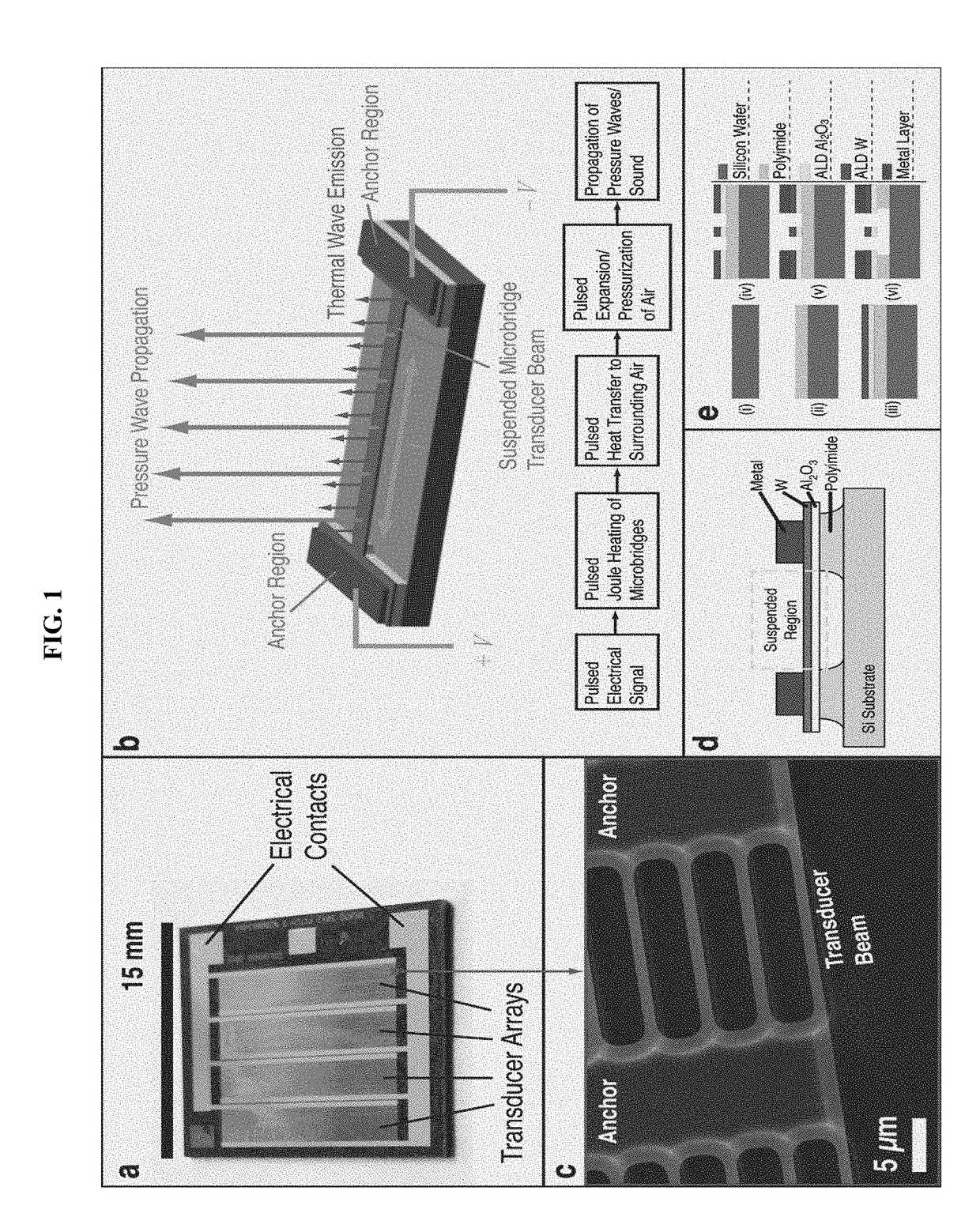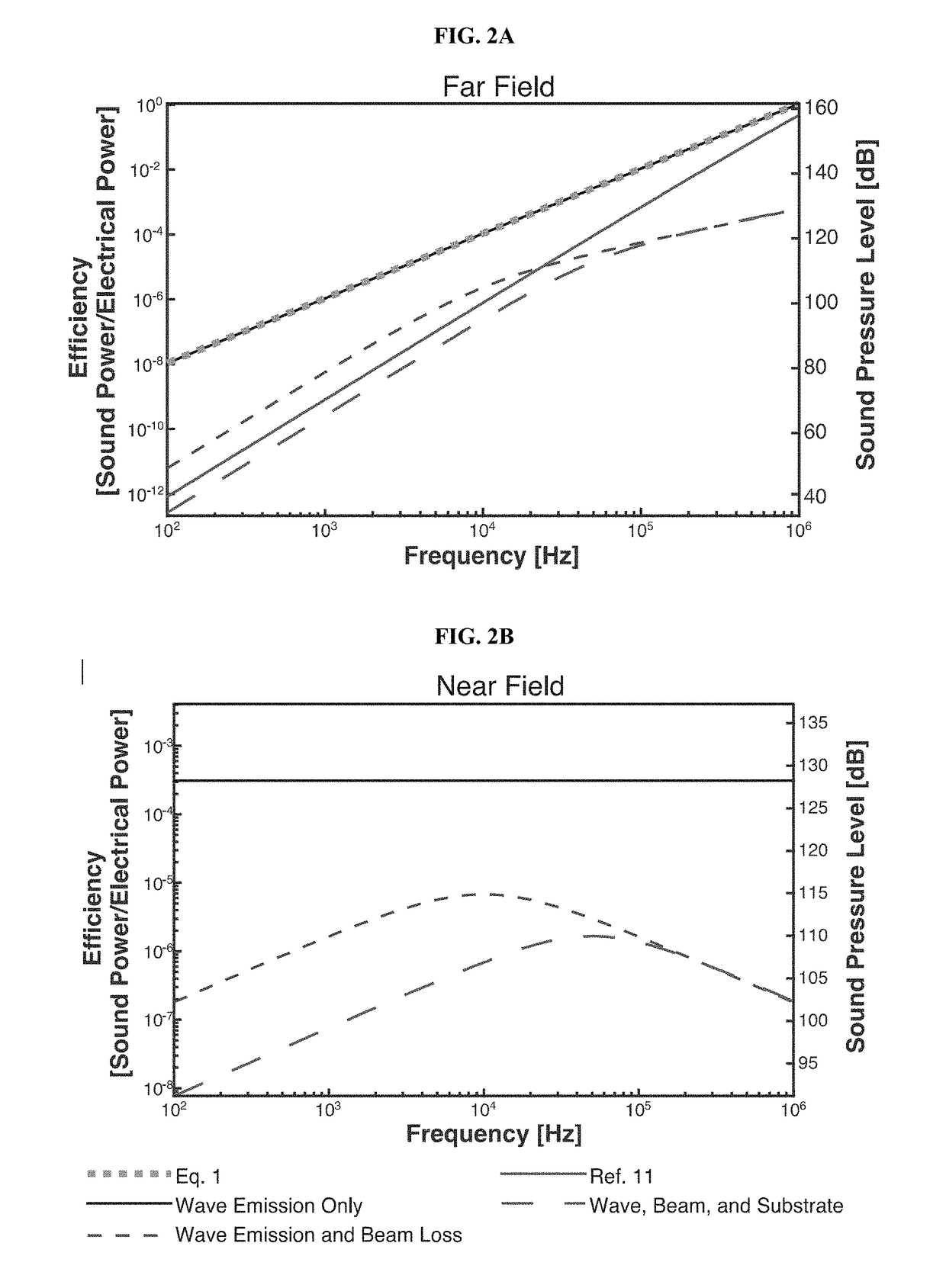Thermal and thermoacoustic nanodevices and methods of making and using same
a technology of thermoacoustic nanodevices and thermoacoustic sound, applied in the direction of specific nanostructure formation, nanostructure assembly, transducer details, etc., can solve the problems of manufacturing challenges of thermoacoustic devices
- Summary
- Abstract
- Description
- Claims
- Application Information
AI Technical Summary
Benefits of technology
Problems solved by technology
Method used
Image
Examples
example 1
Device Design and Fabrication
[0110]Nanobridge arrays were designed such that series and parallel connections would allow a total electrical resistance of 10-20Ω. A 500-nm metal layer was deposited on the W nanofilm in order to provide electrical contact pads and to distribute electrical power throughout the array. Initial demonstration used 500 nm Al as the metal electrical distribution layer, and additional rounds of fabrication used 20 nm Ti with 500 nm Au in order to improve electrical contact to the device arrays. Four design variations were fabricated and tested, Table 1. The fabrication process is illustrated in FIG. 1, Panel e. All designs were fabricated with ALD of 6.5 nm Al2O3 and 19.3 nm W. These materials were chosen due to availability and good temperature tolerance. FIG. 1, Panel a, provides an example of a fabricated chip. The RIE device patterning step tended to overetch the pattern, e.g. 1-μm-width bridges were generated from 2 μm patterns.
TABLE 3Fabricated device d...
example 2
Device Design and Operation
[0115]Thermoacoustic loudspeaker chips were designed and fabricated (Table 3) as a balance among efficiency, electrical power consumption, sound output, manufacturability, and packaging. FIG. 1, Panel a, shows an operational nanobridge array thermoacoustic loudspeaker, with a secondary optical diffraction effect visible due to the presence of large arrays of nanobridges with widths near the wavelengths of visible light. FIG. 1, Panel c, shows a portion of an array of nanobridges fabricated by ALD and used for thermoacoustic sound production, and FIG. 1, Panel d, provides an example cross-section of these devices.
[0116]In audio transduction, a flat frequency response is generally desired for good sound reproduction across the audio spectrum. In order to characterize and verify the frequency response of nanobridge thermoacoustic transducers, three types of acoustic frequency spectrum measurements were performed on the ALD thermoacoustic devi...
PUM
 Login to View More
Login to View More Abstract
Description
Claims
Application Information
 Login to View More
Login to View More - R&D
- Intellectual Property
- Life Sciences
- Materials
- Tech Scout
- Unparalleled Data Quality
- Higher Quality Content
- 60% Fewer Hallucinations
Browse by: Latest US Patents, China's latest patents, Technical Efficacy Thesaurus, Application Domain, Technology Topic, Popular Technical Reports.
© 2025 PatSnap. All rights reserved.Legal|Privacy policy|Modern Slavery Act Transparency Statement|Sitemap|About US| Contact US: help@patsnap.com



